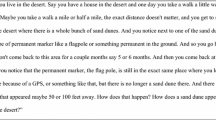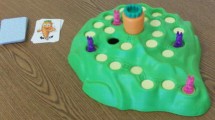Abstract
This study examined some of the methodological approaches used by students to construct causal maps in order to determine which approaches help students understand the underlying causes and causal mechanisms in a complex system. This study tested the relationship between causal understanding (ratio of root causes correctly/incorrectly identified, number of correctly identified root-cause links explaining how root causes directly/indirectly impact final outcomes) and three attributes observed in students’ causal maps (total links, temporal flow, lateral position of final outcome) that students produced before and after online discussions on noted similarities and differences between students’ causal maps. The findings suggest that: (a) causal understanding can be adversely affected if students are instructed before group discussion to temporally sequence nodes to flow from left to right and to position the outcome node farther away from the left edge of the map relative to other nodes in the map; (b) causal understanding following group discussion can be increased by instructing students to minimize the number of causal links and create a map with temporally flow; (c) promoting temporal flow following discussion may be the most effective means of helping students to identify root causes; and (d) instructing students to minimize the number of links following discussion may be the most effective means to helping students explain root causes directly/indirectly impact outcomes. These findings provide insights on what processes and constraints can be formalized and integrated into causal mapping software when used as an instructional and assessment tool.



Similar content being viewed by others
References
Barenholz, H., & Tamir, P. (1992). A comprehensive use of concept mapping in design instruction and assessment. Research in Science & Technological Education, 10, 37–52.
Barman, C. R., Griffiths, A. K., & Okebukola, P. A. O. (1995). High school students’ concepts regarding food chains and food webs: A multinational study. International Journal of Science Education, 17(6), 775–782.
Brewer, W. F., Chinn, C. A., & Samarapungavan, A. (2000). Explanation in scientists and children. In F. C. Keil & R. A. Wilson (Eds.), Explanation and cognition (pp. 279–298). Cambridge: MIT Press.
Bullock, M., Gelman, R., & Baillargeon, R. (1982). The development of causal reasoning. In W. Friedman (Ed.), The developmental psychology of time (pp. 209–254). New York: Academic Press.
Carey, S. (1995). On the origin of causal understanding. In D. Sperber, D. Premack, & A. J. Premack (Eds.), Causal cognition: A multidisciplinary debate (pp. 268–302). Oxford, England: Clarendon Press.
Chi, M. T. H., Feltovich, P. J., & Glaser, R. (1981). Categorization and representation of physics problems y experts and novices. Cognitive Science, 5, 121–152.
Confrey, J., & Doerr, H. M. (1994). Student modelers. Interactive Learning Environments, 4(3), 199–217.
Corrigan, R., & Denton, P. (1996). Causal understanding as a developmental primitive. Developmental Review, 16, 162–202.
Farooq, M. U., & Dominick, W. D. (1988). A survey of formal tools and models for developing user interfaces. International Journal of Man-Machine Studies, 29, 479–496.
Fisher, K. (1990). Semantic networking: The new kid on the block. Journal of Research in Science Teaching, 27, 1001–1018.
Frederiksen, J. R., & White, B. Y. (1998). Teaching and learning generic modeling and reasoning skills. Journal of Interactive Learning Environments, 55, 33–51.
Griffiths, A. K., & Grant, B. A. (1985). High school students’ understanding of food webs: Identification of a learning hierarchy and related misconceptions. Journal of Research in Science Teaching, 22(5), 421–436.
Guenther, R. K. (1998). Human cognition. Upper Saddle River, NJ: Prentice Hall.
Hestenes, D. (1992). Modeling games in the Newtonian world. American Journal of Physics, 60, 732–748.
Hung, W., & Jonassen, D. H. (2006). Conceptual understanding of causal reasoning in physics. International Journal of Science Education, 28(13), 1601–1621.
Ifenthaler, D. (2010). Relational, structural, and semantic analysis of graphical representations and concept maps. Educational Technology Research and Development, 58(1), 81–97.
Ifenthaler, D. (2011). HIMATT [computer software]. Available from http://www.ifenthaler.info/.
Ifenthaler, D., Masduki, I., & Seel, N. M. (2011). The mystery of cognitive structure and how we can detect it: tracking the development of cognitive structures over time. Instructional Science, 39(1), 41–61.
Jeong, A. (2009). Superimposing individual and group causal maps to trigger critical discourse and change in learners’ causal models. Paper presented at the American Educational Research Association conference, San Diego, CA.
Jeong, A. (2010a). Assessing change in learner’s causal understanding: using sequential analysis and causal maps. In V. Shute & B. Becker (Eds.), Innovative Assessment for the 21st Century: Supporting Educational Needs (pp. 187–206). New York, NY: Springer-Verlag.
Jeong, A. (2010b). jMAP [computer software]. Available from http://cscl.wikispaces.com/jmap/.
Johnson-Laird, P. N. (1983). Mental Models: Toward a Cognitive Science of Language, Inference and Consciousness. : Harvard University Press.
Keil, F. C. (1989). Concepts, kinds, and cognitive development. Cambridge, MA: MIT Press.
Kelley, H. H. (1973). The process of causal attribution. American Psychologist, 28, 107–128.
Larkin, J. H. (1983). The role of problem representation in physics. In D. Gentner & A. L. Stevens (Eds.), Mental models (pp. 75–98). Hillsdale, NJ: Lawrence Erlbaum Associates.
Leelawong, K., & Biswas, G. (2008). Designing learning by teaching agents: The Betty’s Brain system. International Journal of Artificial Intelligence in Education, 18(3), 181–208.
Lehrer, R., & Schauble, L. (2000). Modeling in mathematics and science. In R. Glaser (Ed.), Advances in instructional psychology, vol. 5. Educational design and cognitive science (pp. 101–159). Hillsdale, NJ: Lawrence Erlbaum.
Lehrer, R., & Schauble, L. (2003). Origins and evolution of model-based reasoning in mathematics and science. In R. Lesh & H. M. Doerr (Eds.), Beyond constructivism: Models and modeling perspectives on mathematics problem solving, teaching, and learning (pp. 59–70). Mahwah, NJ: Lawrence Erlbaum Associates.
McClure, J., & Bell, P. (1990). Effects of an environmental education-related STS approach instruction on cognitive structures of pre-service science teachers. University Park, PA: Pennsylvania State University. (ERIC Document Reproduction Service No. ED 341 582).
National Research Council. (1996). National Science Education Standards. Washington, DC: National Academy Press.
Nersessian, N. J. (1999). Model-based reasoning in conceptual change. In L. Magnani, N. J. Nersessian, & P. Thagard (Eds.), Models are used to represent reality (pp. 5–22). New York: Kluwer Academic/Plenum Publishers.
Nesbit, J. C., & Adesope, O. O. (2006). Learning with concept and knowledge maps: A meta-analysis. Review of Educational Research, 76(3), 413–448.
Nicoll, G. (2001). A three-tier system for assessing concept map links: a methodological study. International Journal of Science Education, 23(8), 863–875.
Owen, A. (2002). Mapping student minds. Learning and Leading with Technology, 29, 5.
Plate, R. (2010). Assessing individuals’ understanding of nonlinear causal structures in complex systems. System Dynamics Review, 26(1), 19–33.
Ploetzner, R., & Spada, H. (1998). Constructing quantitative problem representations on the basis of qualitative reasoning. Interactive Learning Environments, 5, 95–107.
Rapus, T. L. (2004). Integrating information about mechanism and covariation in causal reasoning. Dissertation Abstracts International, 65(2-B), 1047.
Rehder, B. (2003). Categorization as causal reasoning. Cognitive Science, 27(5), 709–748.
Richardson, G. (1999). Reflections for the future of system dynamics. Journal of the Operational Research Society, 50(4), 440–449.
Ruiz-Primo, M. A., & Shavelson, R. (1996). Problems and issues in the use of concept maps in science assessment. Journal of Research in Science Teaching, 33(6), 569–600.
Ruiz-Primo, M. A., Shavelson, R., & Schulz, S. (1997). On the validity of concept map-base assessment interpretations: An experiment testing the assumption of hierarchical concept maps in science (CSE Technical Report 455). Los Angeles: University of California.
Scavarda, A. J., T. Bouzdine-Chameeva, Goldstein, S., Hays, J., & Hill, A. (2004). A review of the causal mapping practice and research literature. Second World Conference on POM and 15th Annual POM Conference, Cancun, Mexico.
Schlottmann, A. (2001). Perception versus knowledge of cause and effect in children: When seeing is believing. Current Directions in Psychological Science, 10(4), 111–115.
Thagard, P. (2000). Explaining disease: Correlations, causes, and mechanisms. In F. C. Keil & R. A. Wilson (Eds.), Explanation and Cognition (pp. 254–276). Cambridge, MA: MIT Press.
Vandierendonck, A., & de Vooght, G. (1996). Evidence for mental-model-based reasoning: A comparison of reasoning with time and space concepts. Thinking and Reasoning, 2(4), 249–272.
Vosniadou, S. (2002). On the nature of naïve physics. In M. Limon & L. Mason (Eds.), Reconsidering conceptual change: Issues in theory and practice (pp. 61–76). Dordrecht: Kluwer Academic Publisher.
Wellman, H. M., & Gelman, S. A. (1998). Knowledge acquisition in foundational domains. In W. Damon, D. Kuhn, & R. S. Siegler (Eds.), Handbook of child psychology: Cognition, perception and language (pp. 523–573). New York: Wiley.
Wilson, J. (1994). Network representations of knowledge about chemical equilibrium: Variations with achievement. Journal of Research in Science Teaching, 31, 1133–1147.
Author information
Authors and Affiliations
Corresponding author
Rights and permissions
About this article
Cite this article
Jeong, A., Lee, W.J. Developing causal understanding with causal maps: the impact of total links, temporal flow, and lateral position of outcome nodes. Education Tech Research Dev 60, 325–340 (2012). https://doi.org/10.1007/s11423-011-9227-0
Published:
Issue Date:
DOI: https://doi.org/10.1007/s11423-011-9227-0




